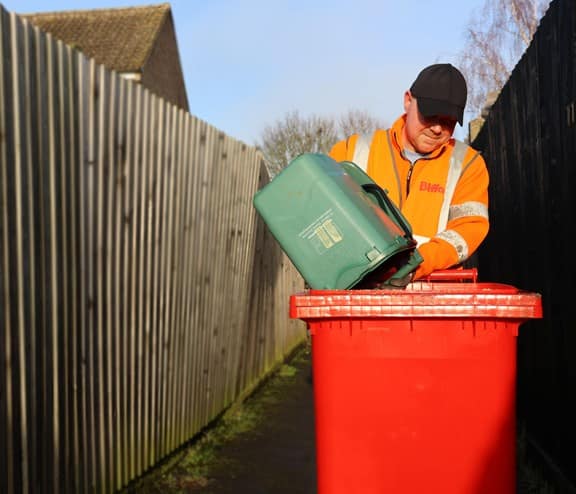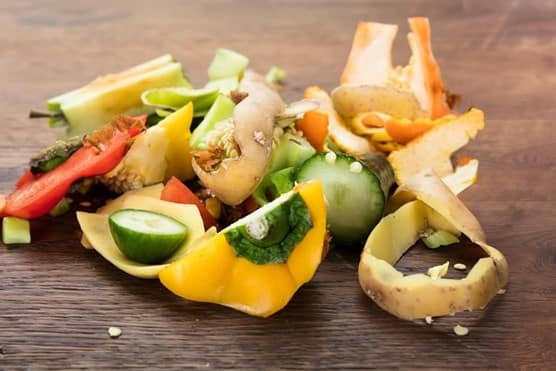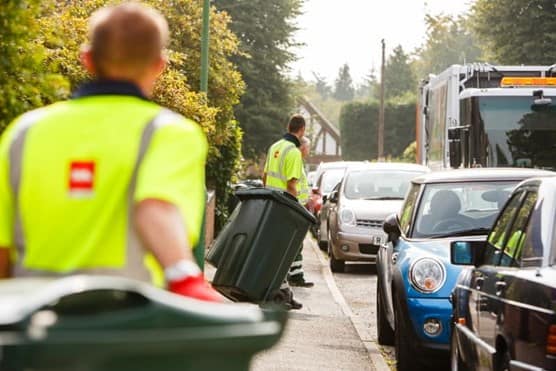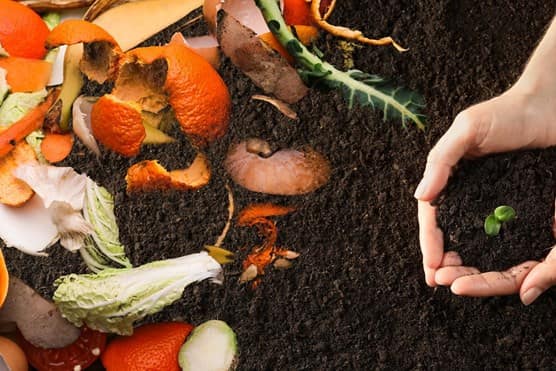Rethink food waste with our household bin calculator
When we work together, small changes to our daily habits can make a big difference to you and the environment. Use our calculator and smart tips below to see what should go in your food bins under Simpler Recycling rules and how to make the most of what’s in your kitchen.
Household food bin calculator

Wherever you live in England, the new rules ensure that all households across England will have the same collection system provided by the local authority, with separate bins for dry recycling (such as paper, cardboard, tins, and plastics), food waste, and glass. This ensures more waste can be recycled and less is sent to landfill or incinerated.
Your local authority will be in touch ahead of time to explain exactly what you need to do and which bins to use. Keep an eye out – small changes at home can make a big difference.

A caddy is handy indoors in the kitchen – where you can discreetly and conveniently throw away inedible food when preparing, cooking, or clearing up.
When full, you can transfer your food waste to an outdoor food bin for easy collection by the local authority. No mess, no fuss.
Remember, food waste collection services vary so it's best to check directly with the local authority, and for those living in urban areas, communal collections are available.
What food waste goes in your caddy?
Do you know which types of food waste are bin-friendly?
Placing the wrong things in your food waste bin can cause big problems. If non-compostable or non-digestible items are mixed in with your food waste, the whole bin could be contaminated – meaning it can’t be recycled and may end up in a landfill or being incinerated.
Here’s a quick guide to help you get it right – what goes in, and what to keep out:
Food-bin friendly waste:
Fruit and vegetable peelings, cores, tops, pits and stones
Meat and fish leftovers and bones
Egg shells and dairy products like cheese and milk, including cheese rinds.
Bread, pasta, rice, pastries and other baked goods no longer fit for human consumption
Plate scrapings, leftovers and uncooked food
Out-of-date food (removed from packaging), including spoiled or mouldy food
Coffee grounds
Small amounts of sauces or gravy
Avoid putting in:
Stickers from fruit and vegetables
Black bags or non-compostable binbags
Any carrier bag or food packaging, even if labelled biodegradable or compostable
Metal, glass or ceramic items (tin foil, bottle caps and broken dishware)
Tea bags with plastic parts
Liquids · Garden waste, pet waste or cat litter
Paper products (not soiled by food)
Chewing gum
Cigarette butts or ash
Medicines or tablets
Wood ash from treated timber
Reduce waste food with a little know-how
With a few small changes to daily habits, the average household can stop up to 30% of their weekly food shop from ending up in the bin.
According to WRAP, the average person discards around 75kg of food a year – that’s 300kg for a family of four. Even more striking: around 70% of that food is still perfectly edible - meaning millions of tonnes of items like bread, fruit, veg, and dairy, which are often simply overbought, going to waste.
Visit WRAP’s Love Food Hate Waste campaign website for smart, easy tips – from meal planning to freezing extras – to help reduce waste less and save more.


